The Encounter That Introduced Peyote to Western Science
The Encounter That Introduced Peyote to Western Science
Originally published on chacruna.net and written by Mike Jay
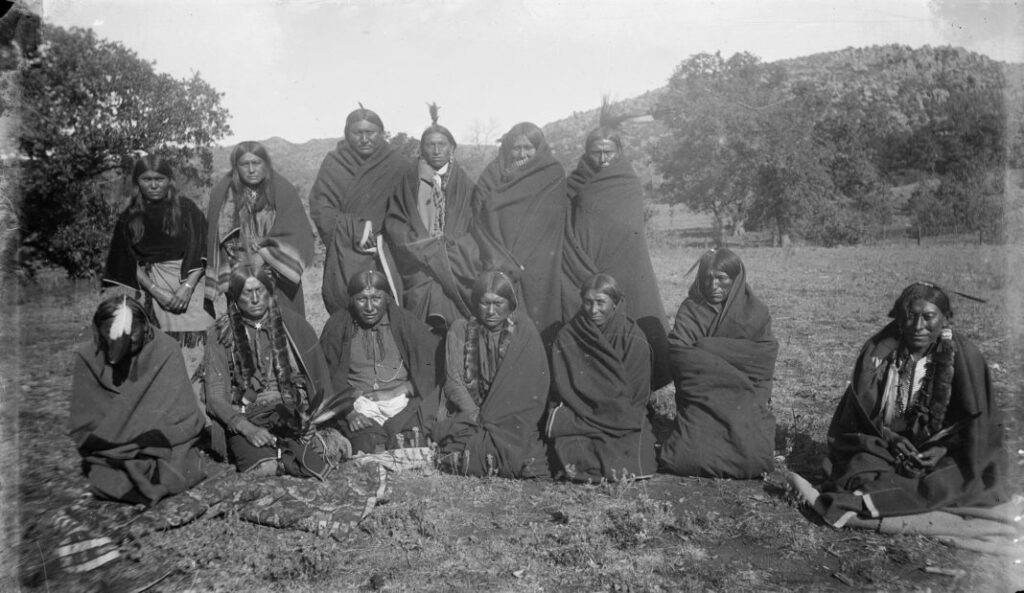
Peyote Ceremony by James Mooney, 1893. Courtesy of the National Anthropological Archives, Smithsonian Institution (gelatin glass negative BAE GN 01778a 06305400).
This photograph is one of hundreds in the archives of the Smithsonian Institution that record people of the Plains tribes in their forced captivity on the reservations in the 1890s. The information attached to it is minimal: “Ceremony, Peyote, gelatin glass negative, no date.” But this one captures a remarkable and historic moment. It was taken in the chill of a November morning in 1893 after an all-night meeting that brought the two great champions of the emerging peyote religion— one Indian, one White—together for the first time. Later that morning, a burlap sack of dried peyote buttons was exchanged between them. These would be carried back east to Washington DC, where peyote’s visions would be scientifically investigated for the first time.
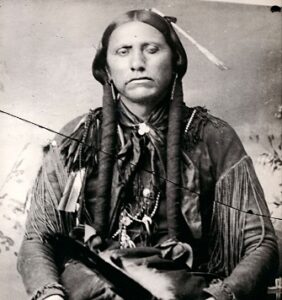 The most recognizable figure in the photograph, seated second from the left in the front row, is Quanah Parker, who by this time, had begun to use the title Chief of the Comanches, a role that had never existed in their days of freedom. The Comanche (Numunuh) people were confined, together with Kiowa and Apache tribal groups, on a reservation around the frontier garrison post of Fort Sill that included their old heartland of the Wichita Mountains, a landscape of ancient granite crags, post-oak forests, fast-running creeks and valleys of long grass in which the last buffalo had taken refuge.
The most recognizable figure in the photograph, seated second from the left in the front row, is Quanah Parker, who by this time, had begun to use the title Chief of the Comanches, a role that had never existed in their days of freedom. The Comanche (Numunuh) people were confined, together with Kiowa and Apache tribal groups, on a reservation around the frontier garrison post of Fort Sill that included their old heartland of the Wichita Mountains, a landscape of ancient granite crags, post-oak forests, fast-running creeks and valleys of long grass in which the last buffalo had taken refuge.
Quanah’s authority rested on the delicate balancing act of remaining a trusted broker to the federal government while also defending his people against exploitation and the existential threats to their culture. They were no longer permitted to hunt, and the rations allotted to them by the federal Bureau of Indian Affairs, after the graft and pilfering by the contractors who supplied them, left them in near starvation. Quanah negotiated on behalf of his people with the ranchers and cattlemen who wanted the use of the reservation’s grazing land, a business that in time brought considerable income to the reservation, and to him personally.
The conditions the Comanche suffered were similar to those in other reservations where, during 1890 and 1891, the messianic Ghost Dance swept across the Plains tribes before being brutally suppressed after the massacre at Wounded Knee. But Quanah, who had been misled by similar prophecies in the past, rejected the Ghost Dance and embraced the peyote religion. He saw the Ghost Dance as the promise of a miracle that was bound to be disappointed and could only lead deeper into cultural despair. Peyote, by contrast, gave its worshippers the power to transform themselves from within. It created a sacred world beyond the grasp of White civilization, but one that could coexist with it.
It was said that Quanah first encountered peyote in 1884, when he was cured by it of a serious stomach illness, though he may also have learned of it from one of his wives who was a Lipan Apache, a group with deep historical ties to peyote’s natural habitat around the Rio Grande. 1884 was also the year that the Texas railroad opened, allowing peyote to be traded and transported throughout the southern Plains. After the suppression of the Ghost Dance, the Bureau of Indian Affairs banned singing and dancing on the reservations and the all-night tipi peyote ceremony emerged as a form of worship that could continue beneath the prying eyes of the authorities. As Charles Adams, the Bureau’s agent on the Fort Sill reservation, reported in 1891, “they keep it hid out like the Whites do whisky in Kansas.”
Quanah recognized that the peyote religion needed to accommodate itself within the Protestant culture that surrounded it. He framed the tipi ceremony, not as a rival of the mission school and the prayer meeting, but a complement to them. He resisted Christian conversion to the end, but he spoke its language fluently, and he presented peyote as a distinctively Indian expression of the same higher truth. In his famous line, “the White man goes into his church house and talks about Jesus, but the Indian goes into his tipi and talks to Jesus.” Christ’s crucifixion was the White man’s sin, and Indians had no need to atone for it. Peyote, the form in which God had always been with them, was their communion.
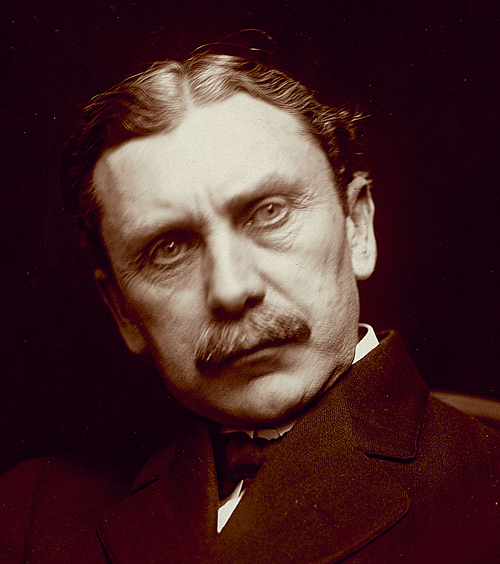
Portrait of James Mooney, undated. Courtesy of the National Anthropological Archives, Smithsonian Institution, NAA INV 02863000
The photograph’s other well-known figure is the one behind the camera: James Mooney, ethnologist with the Smithsonian Institution and lifelong advocate for the peyote religion. In February 1891, Mooney had become the first White man to participate in an all-night peyote ceremony, to which he was invited by one of his Kiowa informants. It took place in a woodland copse alongside the Wichita river on the far side of the mountains from Fort Sill. He sat in the tipi with a group of around 30 Kiowa, Comanche, and Apache worshippers, and was entranced by the singing, drumming, and praying, and deeply moved by a healing ritual for a small child that took place in the darkness before dawn. In the morning after the meeting, the roadman (master of ceremonies) asked him to “go back and tell the Whites that the Indians had a religion of their own which they loved.”
Mooney spent the rest of his career honoring this request, which went to the heart of his lifelong commitment to preserving Indian culture in a White world committed to its eradication. His mission ran against the grain of the US federal policy of assimilation, which assumed that, within a generation, there would be no more Indians, only “Americans.” Mooney, like Quanah, was no Christian believer, but he presented peyote in his Smithsonian reports in the same terms: as a source of religious and moral inspiration, not the enemy of the missionaries, but their ally. He also stressed its value as a medicine that deserved a place in the Western pharmacopoeia. As he wrote in an 1896 article for the Therapeutic Gazette, “the Indians regard the mescal [peyote] as a panacea in medicine, a source of inspiration, and the key which opens to them all the glories of another world.” The last phrase was characteristic of his advocacy: those preoccupied with saving the Indian soul would read it in Christian terms, but for Mooney it meant the old tribal ways.
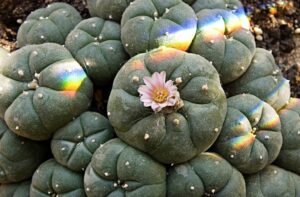 By 1893, Mooney had concluded that the Comanche were among the earliest adopters of the tipi peyote ceremony, and he traveled to Fort Sill to interview them about their practices. He was welcomed with a peyote meeting. Although Quanah had become the most celebrated roadman of the Plains tribes, presiding over meetings hosted by the Cheyenne, Arapaho, Pawnee, Osage, and Ponca, he nominated as roadman his elder Puiwat, who sits to his right in the photo, his face obscured by an eagle father. Quanah wanted to show Mooney that peyote “does not age men prematurely or make them weak-minded or crazy,” and Mooney wrote later that Puiwat “was blind and very feeble,” yet “when it came to his turn to sing the midnight song he took the rattle and sang as vigorously as any of the others.”
By 1893, Mooney had concluded that the Comanche were among the earliest adopters of the tipi peyote ceremony, and he traveled to Fort Sill to interview them about their practices. He was welcomed with a peyote meeting. Although Quanah had become the most celebrated roadman of the Plains tribes, presiding over meetings hosted by the Cheyenne, Arapaho, Pawnee, Osage, and Ponca, he nominated as roadman his elder Puiwat, who sits to his right in the photo, his face obscured by an eagle father. Quanah wanted to show Mooney that peyote “does not age men prematurely or make them weak-minded or crazy,” and Mooney wrote later that Puiwat “was blind and very feeble,” yet “when it came to his turn to sing the midnight song he took the rattle and sang as vigorously as any of the others.”
After the daylight song that concluded the meeting, the group posed beside the tipi for Mooney’s camera, huddled in blankets in front of the Wichita mountain peak now known as Quanah’s Mountain (this part of the old reservation is now the Wichita Mountains Wildlife Refuge). After the photo was taken, Quanah was called away to a meeting with two Texas cattlemen to discuss a pasture lease. As Mooney observed later in defense of peyote, after ten hours in the tipi Quanah was “perfectly confident in his ability to transact the business” and was “entirely too smart a man to attend to business when his brain is not in working order.” Quanah, in turn, referred to Mooney as “the only White man to understand our religion,” and, before he left, he sold him a large burlap sack of dried peyote buttons, 50 pounds in weight.
Mooney took the peyote back to Washington DC, where he gave around half of the buttons to the chemistry division of the Department of Agriculture, and another batch to the medical department of Columbian (now George Washington) University. By this time, a few Western doctors and cactus traders had heard tales of peyote’s wonderful properties and purchased samples from the peyoteros who supplied it around the Texas-Mexico border, and the Detroit pharmacists Parke, Davis were developing a mild tincture as a cardiac stimulant. But its visionary and spiritual powers were still unexplored by Western science. Columbian’s professor of materia medica, Daniel Webster Prentiss, used the buttons Mooney supplied to conduct the first scientific trials.
Prentiss gave between three and seven buttons to a series of students and volunteers, who reported a range of experiences that ranged from ecstatic to nightmarish. He also passed some buttons on to Silas Weir Mitchell, the leading neurologist in the USA at that time, who wrote a lengthy and vivid report on the “brilliant visions” he experienced. It was published in 1896 in the British Medical Journal, introducing peyote to the international scientific community. Mitchell sent some of Quanah’s buttons to the philosopher William James, with the enthusiastic promise of “an afternoon and evening in fairyland,” but James experienced nothing more remarkable than 24 hours of acute gastric distress. In 1897, after reading Mitchell’s article, the German chemist Arthur Heffter made a series of self-experiments with peyote extracts and isolated the compound that was responsible for the visual hallucinations: an alkaloid that he named “meskalin.” It was the first major psychedelic to be discovered by Western science.
The exchange of peyote between Quanah and Mooney on the morning that this photograph was taken cemented a bond of trust between peyote’s two great advocates, but its consequences extended far beyond them. It was a transmission between worlds: from millennia of sacred tradition to the clinical gaze of Western modernity.
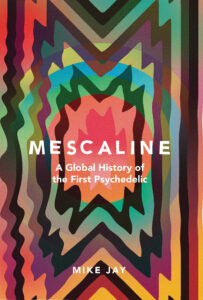 Adapted from Jay, M. (2019). Mescaline: A global history of the first psychedelic. New Haven, CT:Yale University Press.
Adapted from Jay, M. (2019). Mescaline: A global history of the first psychedelic. New Haven, CT:Yale University Press.
I am deeply grateful for the assistance of William Voelker Wahathuweeka and Troy (The Last Captive) Kwihnai Mahquuitsoi Okweettuni of Sia, the Comanche Nation Ethno-Ornithological Initiative (www.comancheeagle.org). Sia is Piah Pha Kahni (Mother Church) of the Numunuh (Comanche) Native American Church.
